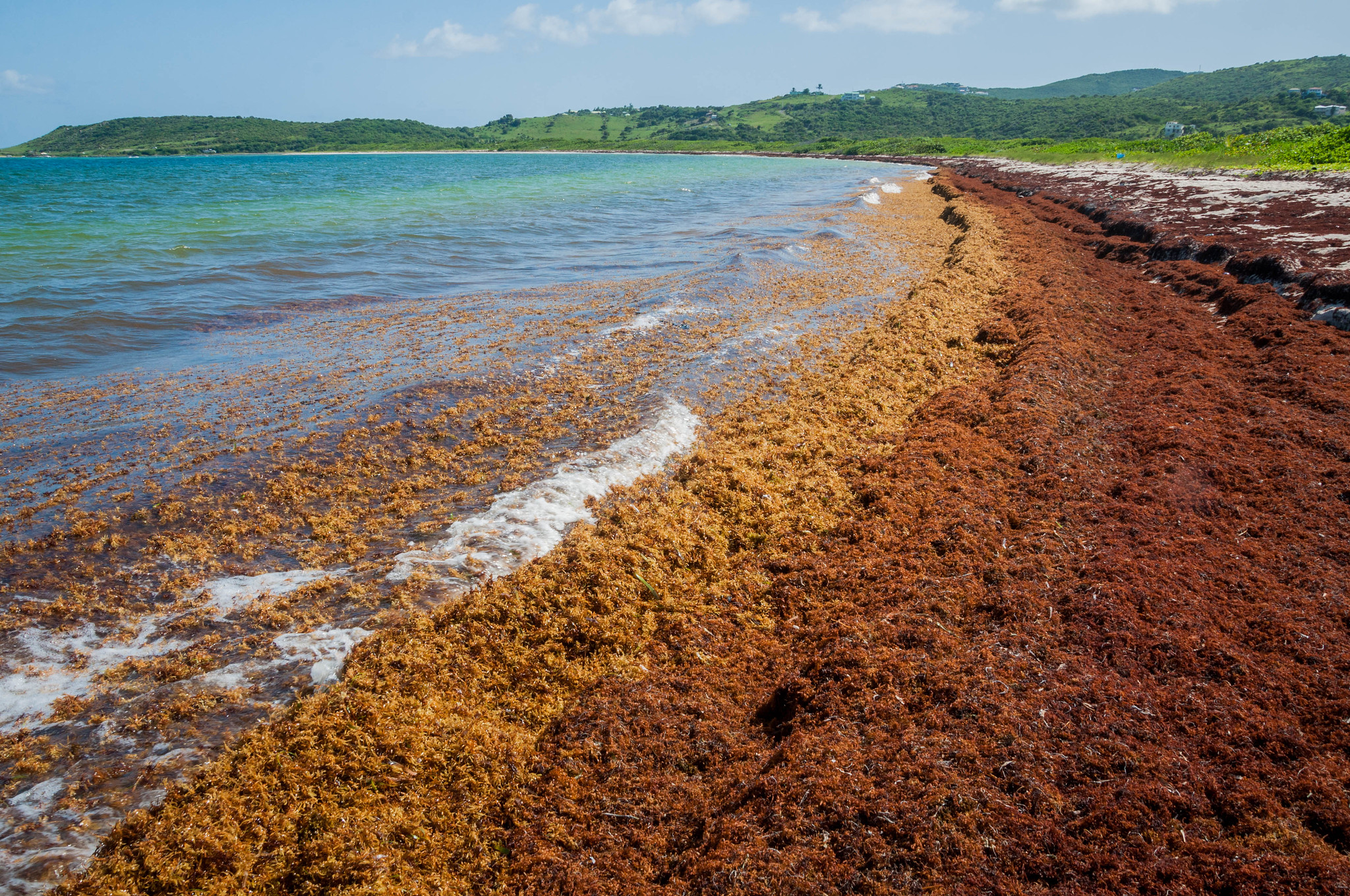Excerpt:
The world’s biggest bloom of sargassum in the Atlantic Ocean is filled with plastic and bacteria that live on it – they could be the secret behind the seaweed’s success.
Along the coastlines of the Caribbean and the Gulf of Mexico, a monster is lurking. It creeps in with the tide and you’ll likely smell it before you see it. Giant clumps of sargassum seaweed have been washing ashore, choking the surf and blanketing beaches in a brown, stinking mass.
The clumps are breaking off an enormous raft of free-floating seaweed known as the Great Atlantic Sargassum Belt, which stretches 5,000 miles (8,047km) between the Gulf of Mexico and the west coast of Africa and can be seen from space.
Scientists who monitor the formation of sargassum in the Atlantic Ocean have already warned that this year’s bloom will “likely be the largest ever recorded“, with its weight reaching more than 13 million tons (12 million tonnes) in April. May did see the amount of seaweed drop by around 15% compared to the previous month, though.
But while the arrival of sargassum on beaches isn’t unusual at this time of year, the enormous seaweed mats cleaving off the belt and washing ashore on the beaches of Florida and Mexico recently hit the headlines due to reports of “flesh-eating” bacteria thriving on them.
In truth, scientists did not discover any Vibrio vulnificus, a bacterium which can cause disease and death if it infects open wounds, in the samples they took from the sargassum, as well as the water around seaweed blooms and other debris found mixed with the clumps.
What they did find, however, was perhaps even more surprising. It may even reveal new clues about what is causing these enormous seaweed blooms in the first place…









